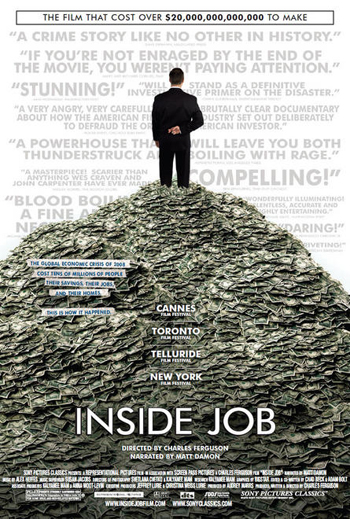Let's go back to where we left off in
Part 1.
In a game of chance, you pay a fixed fee to enter, and then a fair coin will be tossed repeatedly until a tail first appears, ending the game. The pot starts at 1 peso and is doubled every time a head appears. You win whatever is in the pot after the game ends. Thus you win 1 peso if a tail appears on the first toss, 2 pesos if on the second, 4 pesos if on the third, 8 pesos if on the fourth, etc. In short, you win 2^(k − 1) pesos if the coin is tossed k times until the first tail appears.
What would be a fair price to pay for entering the game?
We can estimate the "fair price" of this game using expected value, for which we need the payoffs and probabilities that correspond to each state of nature.
The game could end after the following number of tosses:
1 2 3 4 5 ... k k + 1 ...
Please note that it is possible (although, of course, very improbable) that the game would go on indefinitely.
The payoffs for these possible outcomes are as follows:
1 2 4 8 16 ... 2^(k -1) ... 2^k ...
Now we turn to the probabilities. For the first outcome, the probability of getting a tail on the first toss is 1/2. For the second outcome, you'll need to toss heads then tails, for which the probability is 1/4. The third outcome consists of heads, heads, and tails, and the probability is 1/8. So now, we should see that the pattern of probabilities is:
1/2 1/4 1/8 1/16 1/32 ... 1/(2^k) ... 1/(2^(k + 1)) ...
The expected value of an alternative is just the weighted average of the payoffs, using probabilities as weights. Therefore, the expected value of playing the game is:
1*1/2 + 2*1/4 + 4*1/8 + 8*1/16 + 16*1/32 + 2^(k - 1)*(1/(2^k)) + 2^k*(1/(2^(k + 1))) + ...
= 1/2 + 1/2 + 1/2 + 1/2 + 1/2 + 1/2 + 1/2 + ...
= infinity
(Kudos to reader
"Maykee" for getting it right, and thanks to everyone who tried.)
So, would you pay that much to play the game? How about something significantly less than infinity, like say, 1 million pesos? It does not sound so attractive, right? In fact, I'll bet that you'll even have trouble finding someone who's willing to play the game for 100 pesos (how many tosses would it take to win more than this?). This is why people have referred to this game as a paradox--the
St. Petersburg Paradox, to be precise.
The game was invented by
Nicolaus Bernoulli, nephew of the Bernoulli that we encountered in Part 1. "St. Petersburg" does not pertain in any way to Nicolas, however, but
very interestingly to the work of another famous Bernoulli, his cousin Daniel. According to
Daniel Bernoulli, it is not appropriate to use expected value to solve the problem since
The determination of the value of an item must not be based on the price, but rather on the utility
it yields…. There is no doubt that a gain of one thousand ducats (some form of ancient money) is more significant to the pauper than to a rich man though both gain the same amount.
 |
| Daniel Bernoulli |
What is utility? In its most basic sense utility is the satisfaction or benefit that one gets from choosing or doing something. Economists want to play safe, however, and just say that utility is
that something which makes decision makers choose one thing over another. And Daniel Bernoulli's simple idea--that of
diminishing marginal utility--revolutionized the study of economics and decision making in the next couple of centuries.
Diminishing marginal utility means that the utility that one gets from receiving or consuming one unit of something--be it pesos, ducats, fame, or beer--decreases as one amasses more and more of that something. It explains why the first bottle of beer tastes oh-so-much better than your fifth, and why receiving a 5,000 peso bonus when you're just earning 10,000 pesos a month is more satisfying than receiving the same amount when you're already a millionaire.
This concept is also very important in finance because it defines a decision maker's attitude towards risk. An individual for whom a particular reward has diminishing marginal utility is risk averse with respect to that reward: he or she is the stereotypical decision maker in economics, someone who is willing to pay to avoid a very small probability of a big loss (e.g., someone who buys insurance)--that is, how most of us usually are. Someone for whom the same reward has increasing marginal utility, on the other hand, may be seen as risk seeking, like someone who will pay just to have even a small chance of winning something big (e.g., someone who plays the lottery)--that is, how most of us are in certain situations, sometimes.
Going back to the game, if we assume that for a typical player the game's prize has diminishing marginal utility and that this utility is a slowly increasing function of the player's initial wealth plus his winnings, then the utility of the additional payoff from a toss of heads will be smaller than the utility of the one that came before, which should result in a finite fair price.
I know a lot of you have already had your fill of theoretical mumbo jumbo this past month, so we'll get back to more practical matters in the next post. :)

















